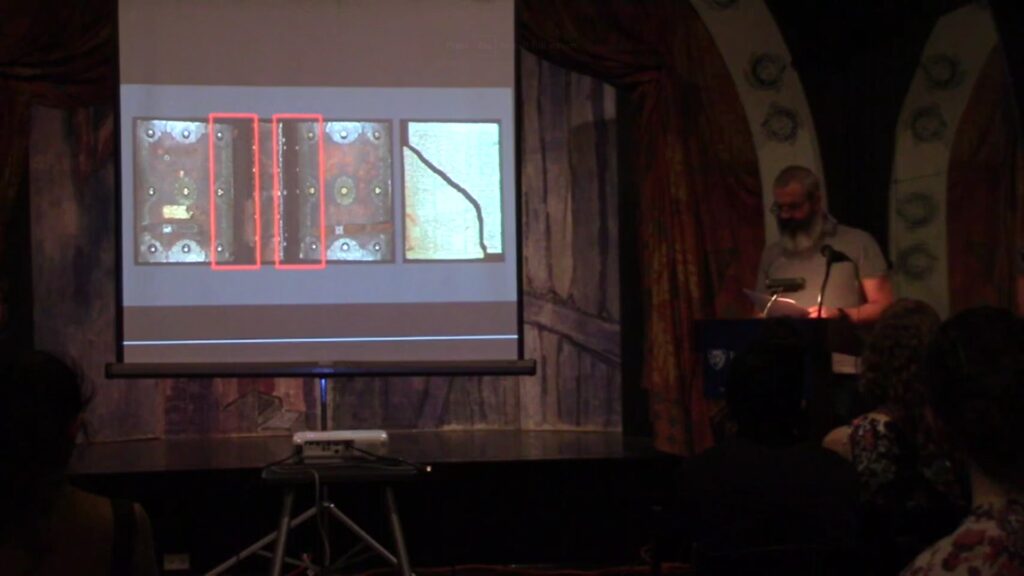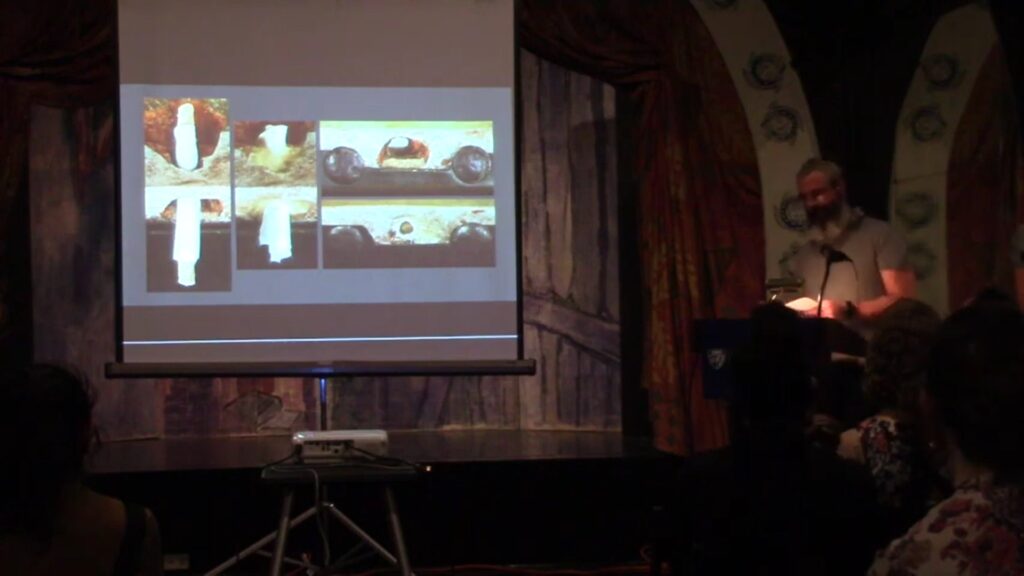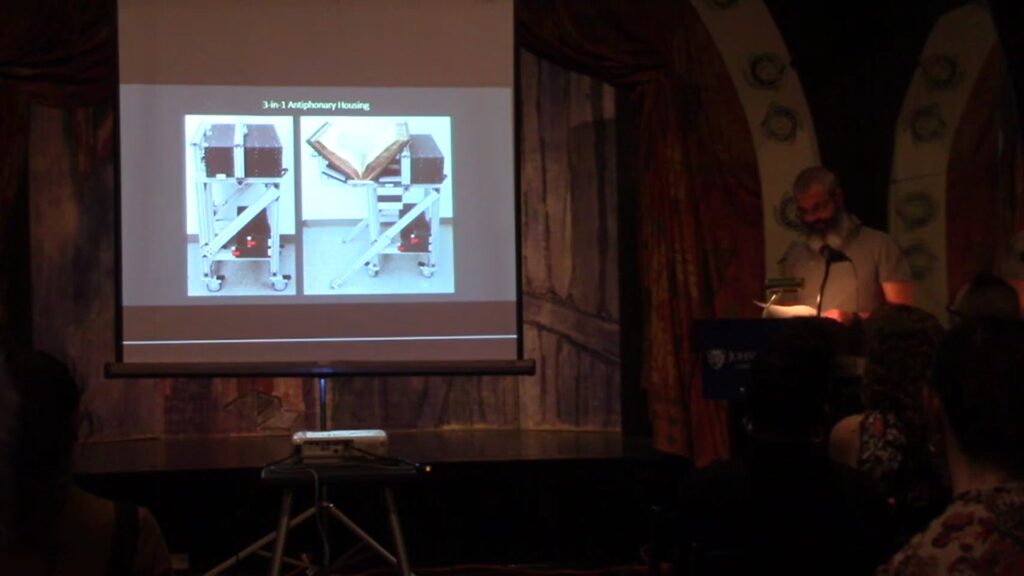“Conserving a 15th-century Italian Antiphonary: Non-traditional binding conservation techniques and an innovative all-in-one housing, display, and moving device”
Speaker: Alessandro Scola
Summarized by Lauren Gottschlich
The Washington Conservation Guild kicked off the 2022–2023 season with a set of excellent talks, all focused on library and archive materials. The second talk of the October meeting was by Alessandro Scola detailing the treatment of an antiphonary. For those unfamiliar with the term, an antiphonary is a liturgical book used by choir members to sing and chant during worship-based activities and services.
Scola introduced the talk with an overview of the book. Weighing in at a whopping 20 kilograms (~44 pounds!), the treatment of this massive book required strategies to not only make the book functional but to also support the immense weight of the tome. As this book is part of a library collection, research and access is central to the mission. Therefore, Scola needed to balance functionality and minimal intervention while performing the treatment.
The antiphonary required treatment to address stability issues including damage to the leather spine and almost complete detachment of the wooden boards. While the exterior of the book needed repair, the parchment text block was stable. Complicating the treatment were copper alloy decorative strips attached near the edges of the boards. So, Scola focused on a treatment that allowed for the book to be put back together while keeping the metal strips in place.

The treatment focused on three main tasks: extending the sewing support to reattach the boards, preparing the boards for reattachment, and lining the spine. Scola detailed the various approaches that were considered during the course of treatment.
Originally, he had planned to use larger thread secured with a cross stitch. This would have protected the original support, but ultimately would have made the diameter of the spine larger. Due to the appearance, another plan was necessary. The second approach involved adding two threads to every other two sections along the sewing support to reattach the boards. Scola altered this historically used approach in attaching only one thread to form the extension and security loop. However, this approach also was not ideal as it caused stress on the book’s spine and repair materials.
Scola then presented the final and ultimately selected approach. First, he addressed the too-large, original stitching holes on the boards. Decreasing the size would prevent the boards from wobbling when reattached and would prevent wear on the wood of the boards. To achieve this, the holes were filled with cord surrounded by paper pulp. Once the pulp had dried, the cord was removed, leaving behind a smaller diameter hole that would better stabilize the boards during the reattachment phase.

Because Scola did not want to remove the metal edges, he developed a creative solution to reinforce the board reattachment. To do this, he used a multilayered lining consisting of a barrier layer of paper, cotton fabric, and two layers of leather to support the weight of the text block and boards. These were adhered with wheatstarch paste and a small amount of Jade 403. The adhesive was applied along the spine and to the boards to reattach the pieces in the minimal space between the board edge and metal decorative elements.
Because the book needed to be accessible despite its weight, size, and age, a multifunctional cart was fabricated to move, store, display, and handle the book. The device consists of an anodized aluminum frame on caster wheels. Two retractable stabilizers hold the cart upright when the book is positioned into the slide-out display platform which acts as a cradle. Concluding the presentation, Scola shared a video of the storage, handling, and display device, and it was astounding. The cart was easy to use, multifunctional and mobile. It is obvious that the design of the device took into account every possible use of the book with a focus on long-term preservation.
If you missed Scola’s talk, check out the WCG Youtube page for a recording!
